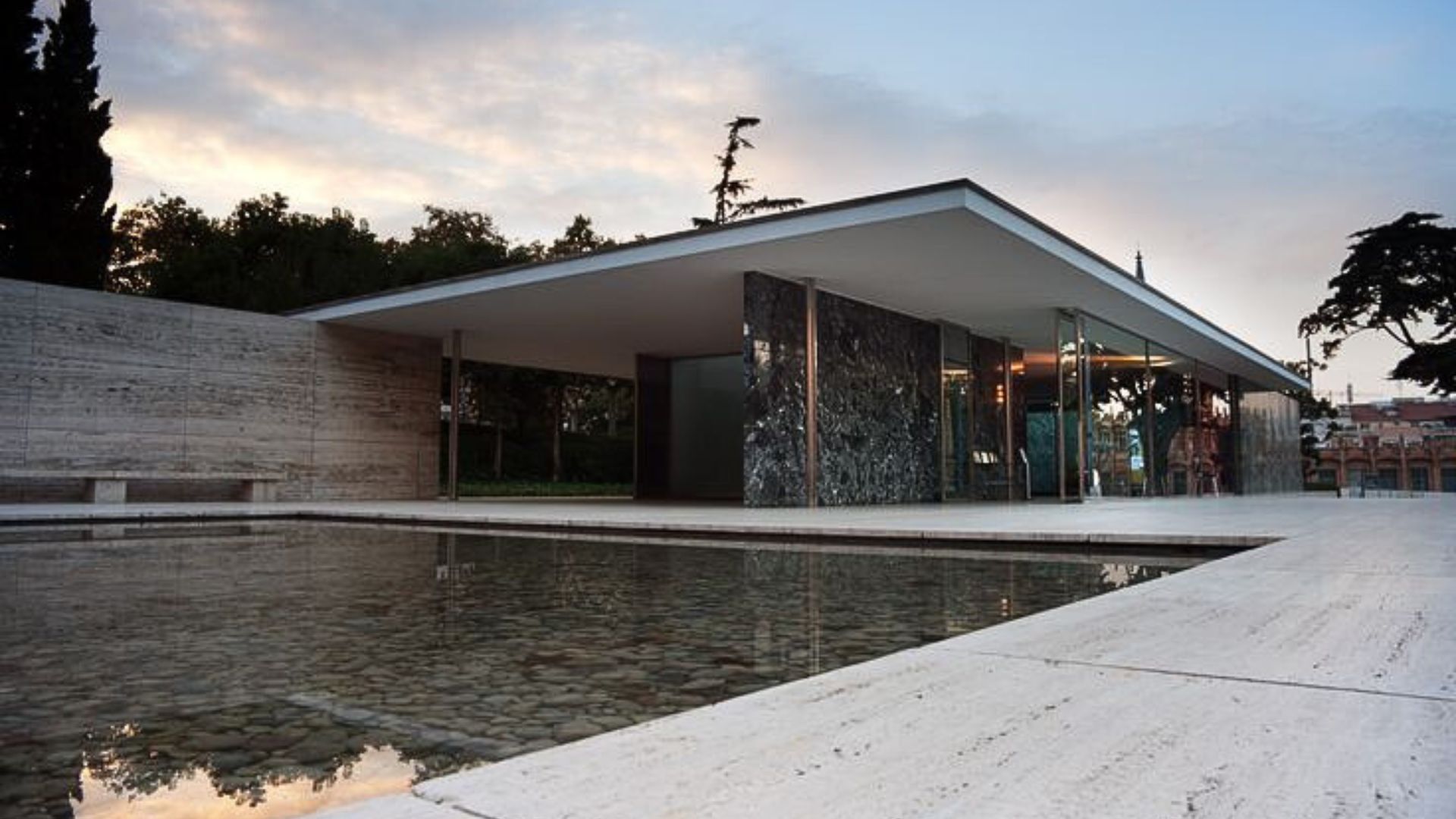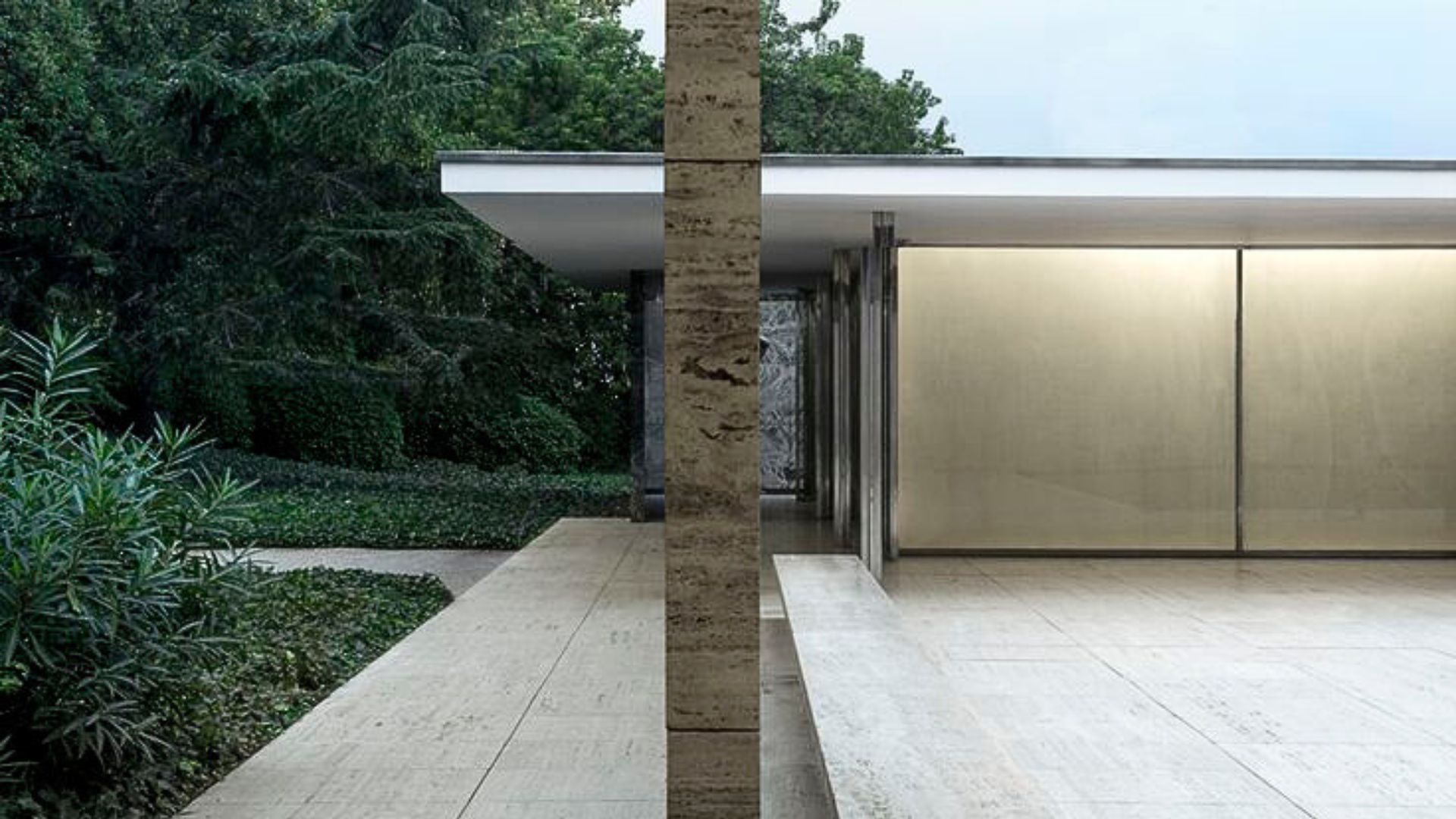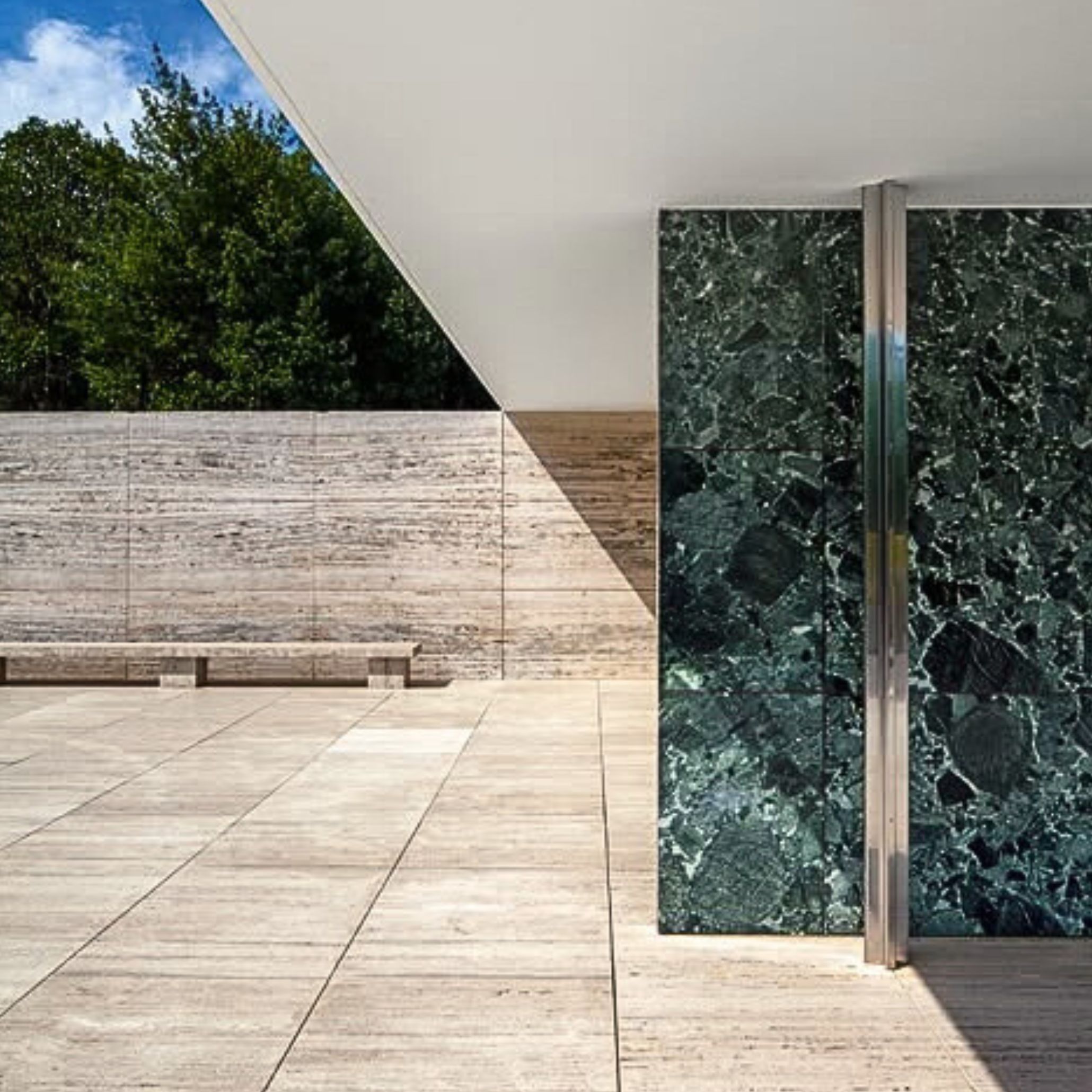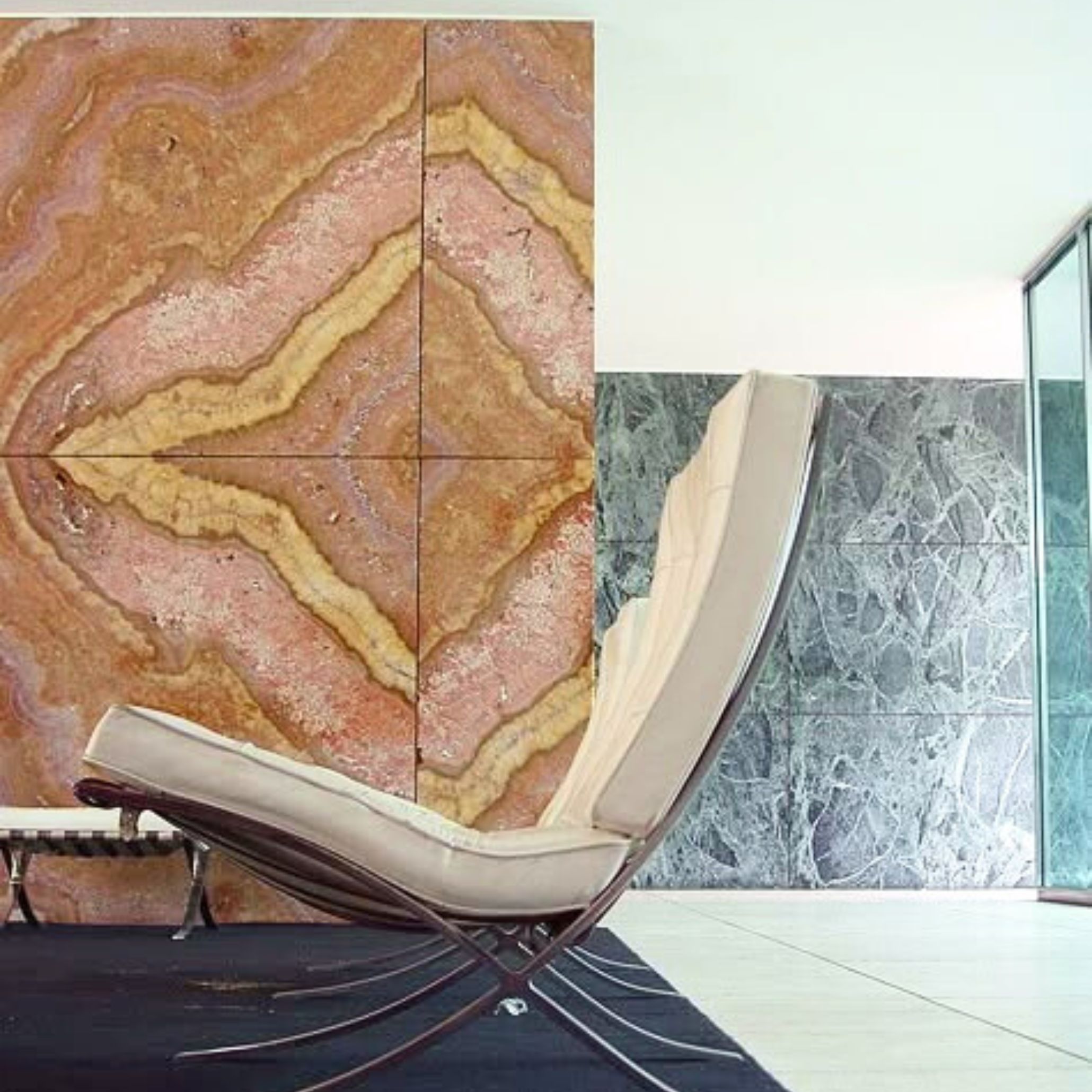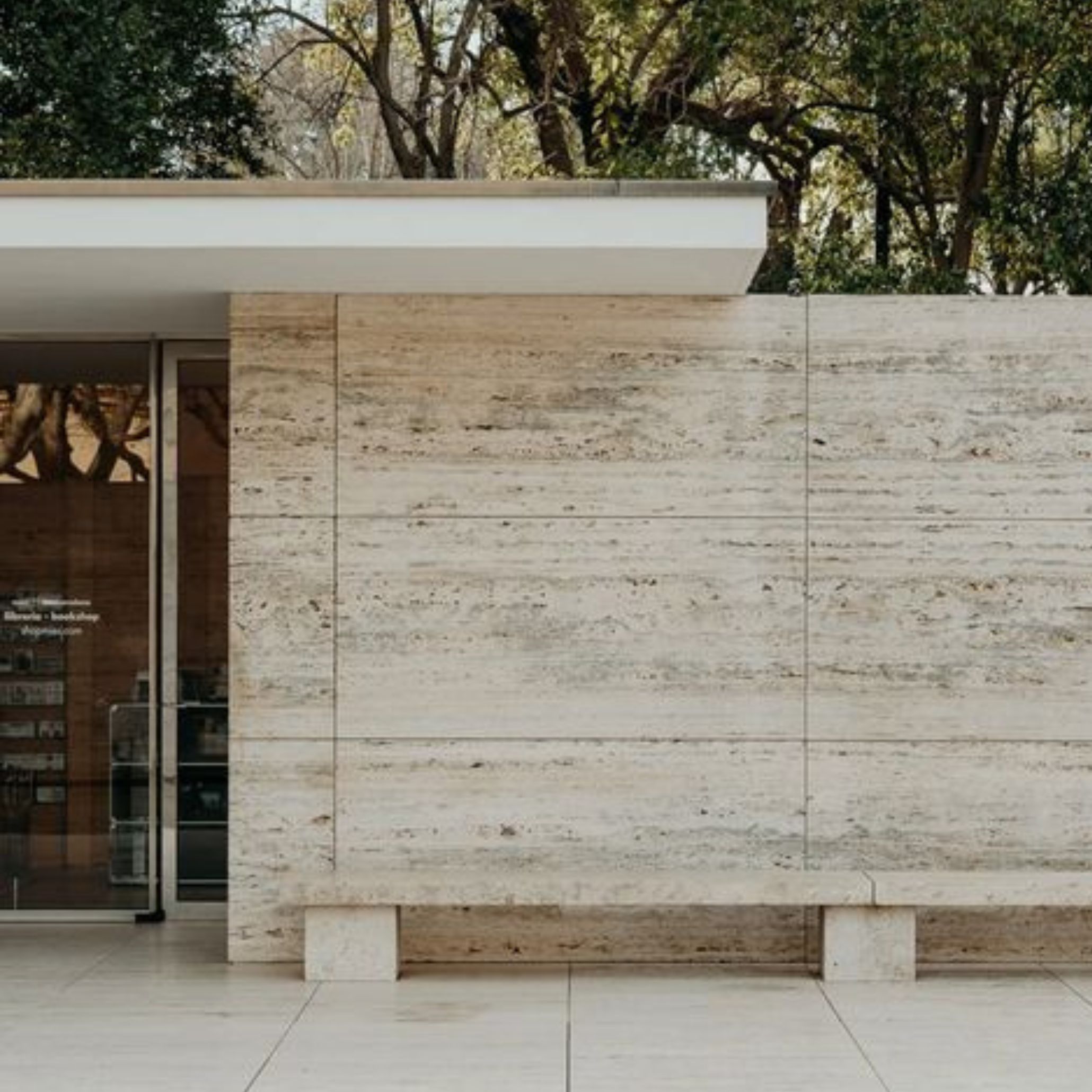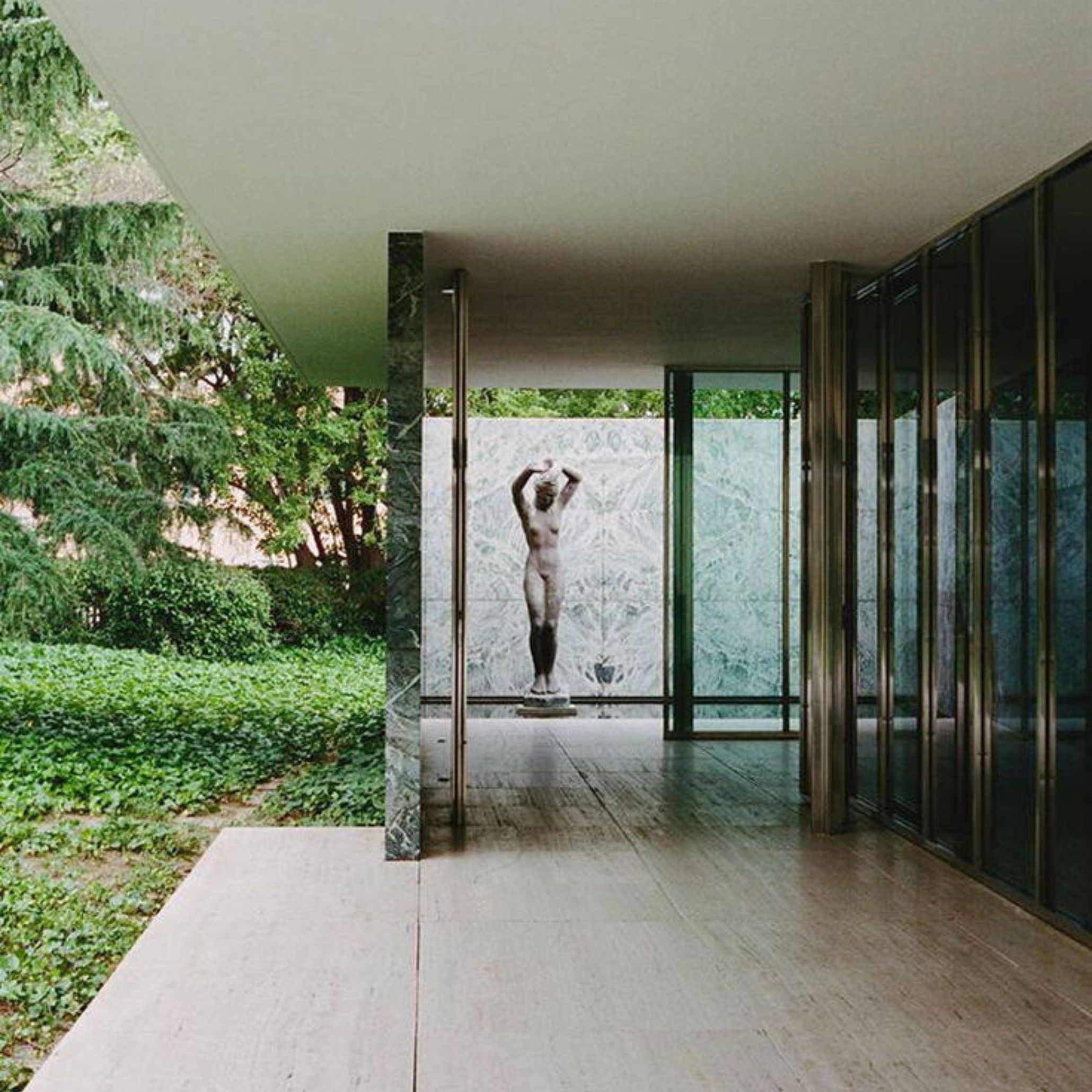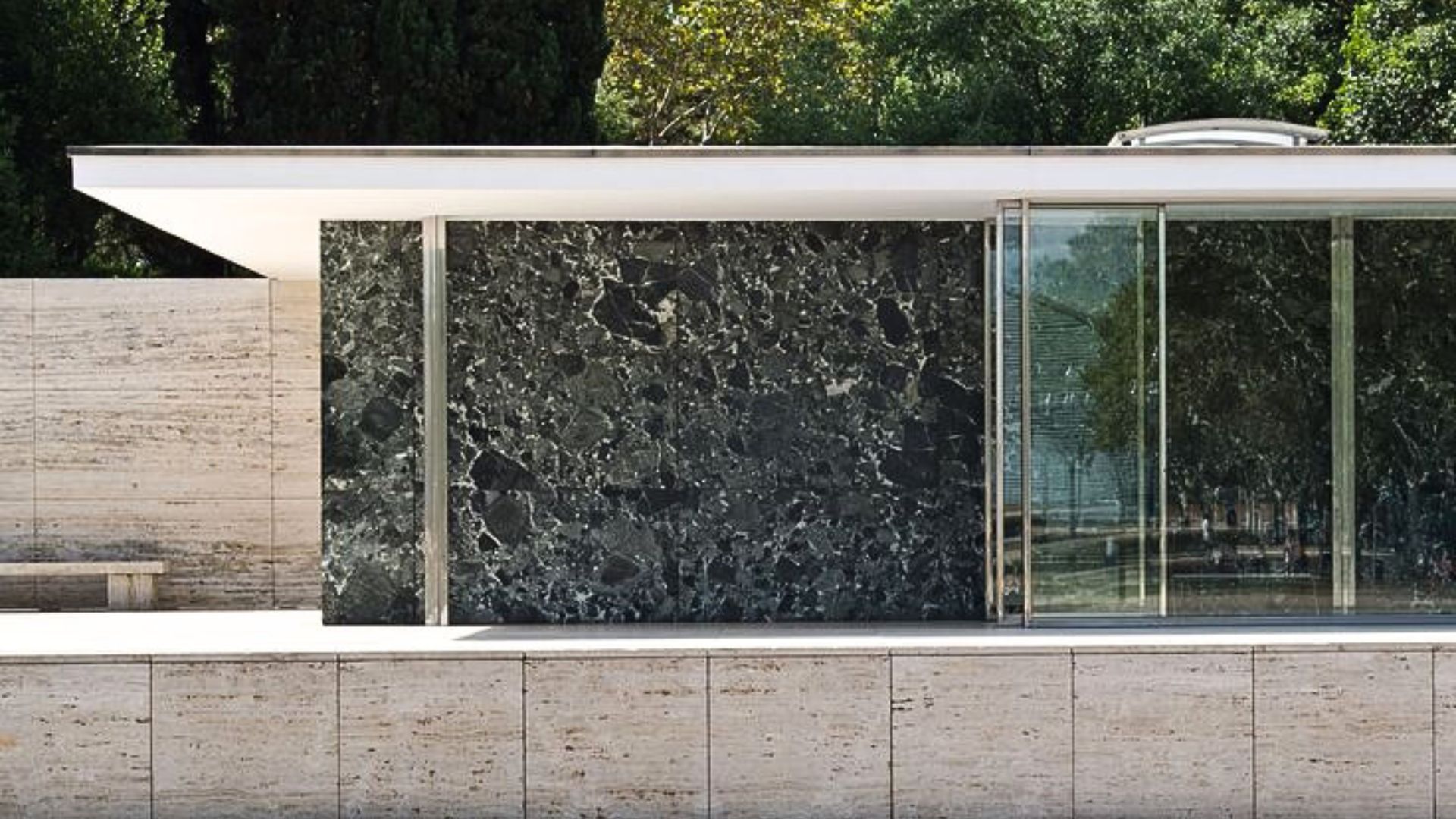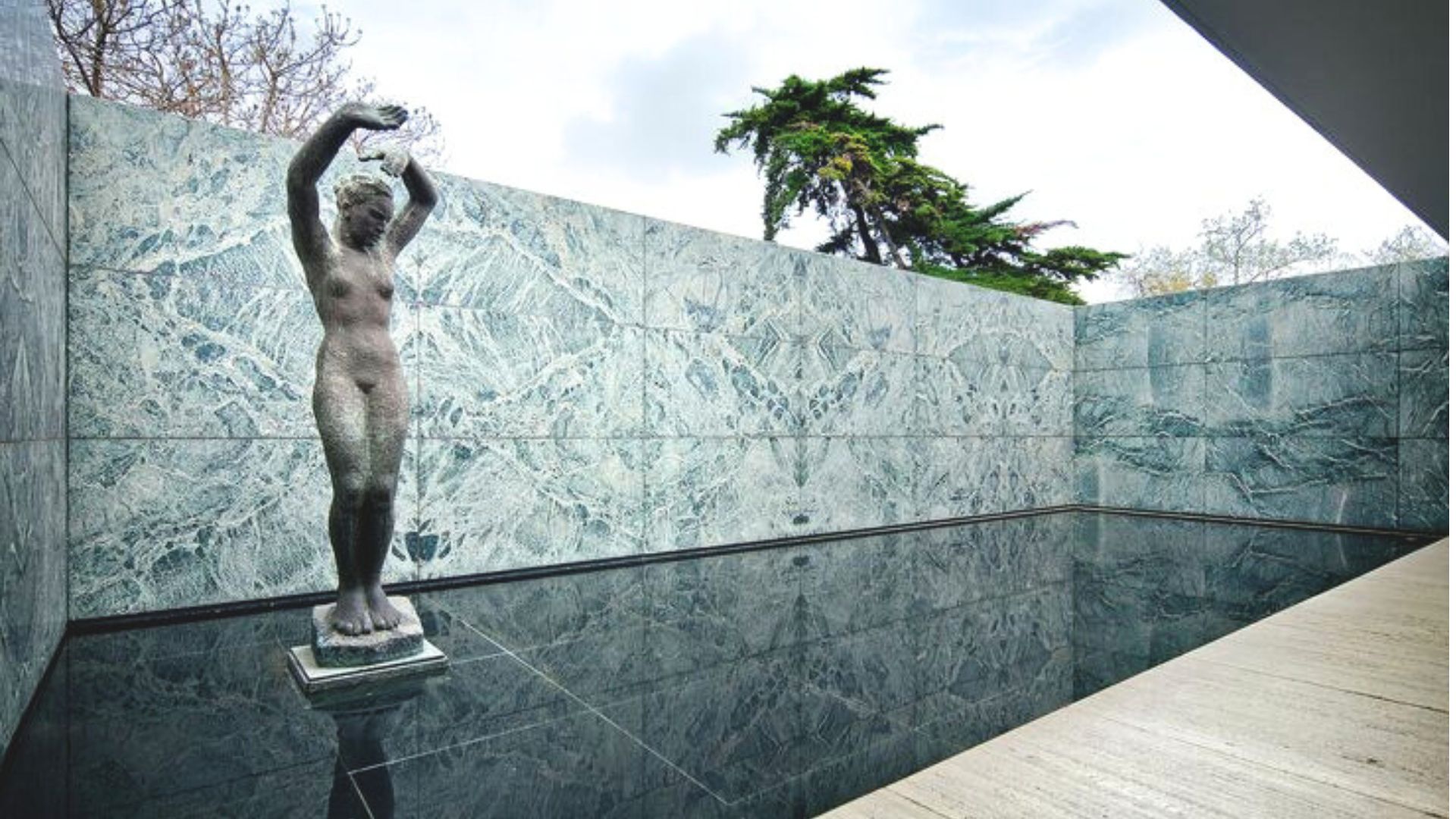The Barcelona Pavilion: A Masterpiece of Modern Architecture
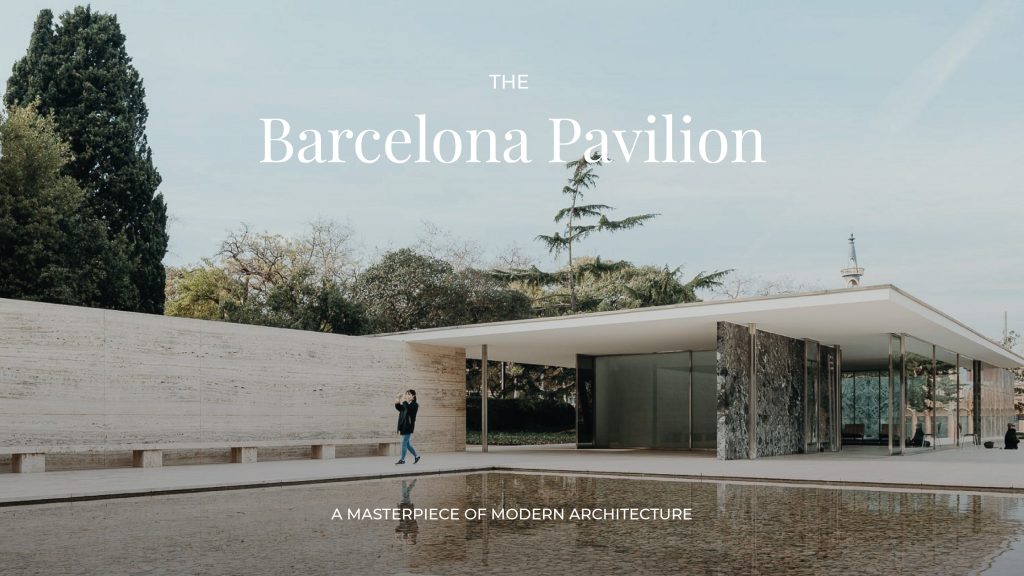
Designed to be ephemeral, yet destined to be eternal, Barcelona Pavilion is a timeless manifesto of minimalism, where space, light and materiality blend into a perfect harmony.
Designed by the notorious architect Mies van der Rohe and the designer Lilly Reich for the 1929 International Exposition in Barcelona, the Pavilion is a masterpiece of 20th-century design. Originally intended as a temporary installation, its architectural importance persisted, impacting generations of architects and guiding the development of contemporary architecture.Featuring a minimalist design, innovative techniques and an elegant use of materials, the Barcelona Pavilion mirrors Mies van der Rohe‘s principle that “less is more”. Making the Barcelona Pavilion one of the most celebrated achievements and defiant works of modernist architecture.
- The Barcelona Pavillion | Source: Pinterest
This article explores the visionary design, the challenges of its construction, its remarkable rebirth, and the profound influence it continues to have on the evolution of modern architecture.
Vision and Design Philosophy
The Barcelona Pavilion was designed not as a conventional building but as a pure expression of space, form, and materiality.
Designed by Mies van der Rohe, in collaboration with Lilly Reich, their shared vision sought to create a space where simplicity, clarity, and the integration of space, materials, and light converge, eliminating traditional architectural barriers.
At the core of the pavilion’s design is its open floor layout, featuring glass walls that blur the lines between the exterior and interior, ideally integrating the pavilion with nature. The incorporation of unusual materials such as steel, glass, and marble was revolutionary for the time, selected mainly for their practical use and visual appeal.
- The Barcelona Pavillion | Source: Pinterest
LiLy Reich’s impact doesn’t go unnoticed, the pavilion’s furnishings and the careful consideration of details in the overall interior layout. Her partnership with Mies infused elegance and practicality within every piece, such as the renowned Barcelona Chair showcasing their mutual dedication to create art.
With this the Barcelona Pavilion became the prime example of enduring minimalist design, exhibiting an impeccable relationship with the environment and modern materials that prevail to inspire and express the essence of contemporary architecture, as a result of their collaborative efforts.
- The Barcelona Pavillion’s materials | Source: Pinterest
- The Barcelona Pavillion’s materials | Source: Pinterest
Materials and Innovative Techniques
The Barcelona Pavilion is renowned for its innovative use of materials and modern architectural techniques, making the choice of materials was crucial in determining the pavilion’s visual appeal.
Mies van der Rohe carefully selected a collection of luxurious yet subtle materials, featuring travertine, green marble from Greece, golden onyx sourced from the Atlas Mountains, and polished chrome. These materials were chosen not just for their aesthetic attractiveness but also for their capacity to radiate light and create a lively and fluid environment.
Regarding its construction methods, Mies van der Rohe innovatively utilized open space on the Barcelona Pavilion by strategically positioning slender, chrome-covered columns that minimized structural impact. The use of reflective surfaces, open spaces, and the interplay between solid and clear components created a groundbreaking architectural style that would characterize modernist architecture for many years ahead. This innovative approach to space and materiality makes the Barcelona Pavilion a unique example of modernist design, where structure and environment merge perfectly.
- The Barcelona Pavillion’s materials | Source: Pinterest
Challenges and the Pavilion’s Rebirth
The development of this innovative building encountered several challenges. The unique design, innovative use of materials, and groundbreaking spatial configuration posed logistical obstacles. Initially designed for the 1929 International Exposition, dismantled shortly after the event, making it a temporary structure. This ephemeral nature posed challenges in maintaining the pavilion’s design.
Acknowledging its importance, a team of Spanish architects under the direction of Oriol Bohigas began a renovation project. In 1986, the Barcelona Pavilion was restored on its original site, following Mies van der Rohe’s precise guidelines. The project demanded attention to every detail and craftsmanship to reproduce the accuracy and quality of the original design, especially the marble and Onyx features. The Barcelona Pavilion‘s innovative materials, such as glass and marble, also required careful construction techniques to guarantee proper support, posing challenges in achieving the intended aesthetic and structural integrity.
- The Barcelona Pavillion’s features
- The Barcelona Pavillion’s features
The rebirth not only restored the physical structure but also reinforced the Pavilion’s legacy as a symbol of modernist architecture. Today, it stands as a monument to innovation and a key reference for contemporary design, proving its lasting impact on architectural history.
Lasting Impact on Modern Architecture
The Barcelona Pavilion has had a profound and lasting impact on modern architecture, influencing generations of architects and designers.
- The Barcelona Pavillion | Source: Pinterest
The principles of simplicity, fluidity, material expression, and the fusing of interior and exterior boundaries have become essential elements of contemporary architecture. From high-rise corporate structures to private residences, Mies van der Rohe’s vision continues to shape modern designs. Architects globally have discovered motivation in its understated beauty, streamlined forms, and the flow between spaces.
- The Barcelona Pavillion | Source: Pinterest
The Barcelona Pavilion continues to serve as an enduring representation of modernist architecture. More than just a building, it signifies as a statement of simplicity and precision, showing that architecture can surpass its fundamental utility and become a genuine form of art. A century after its creation, it continues to serve as an ode to Mies van der Rohe’s enduring influence and a symbol of innovation. The pavilion goes beyond being just an architectural symbol, it represents a philosophy, inspiring designers and visionaries to push the boundaries of architectural possibilities.


